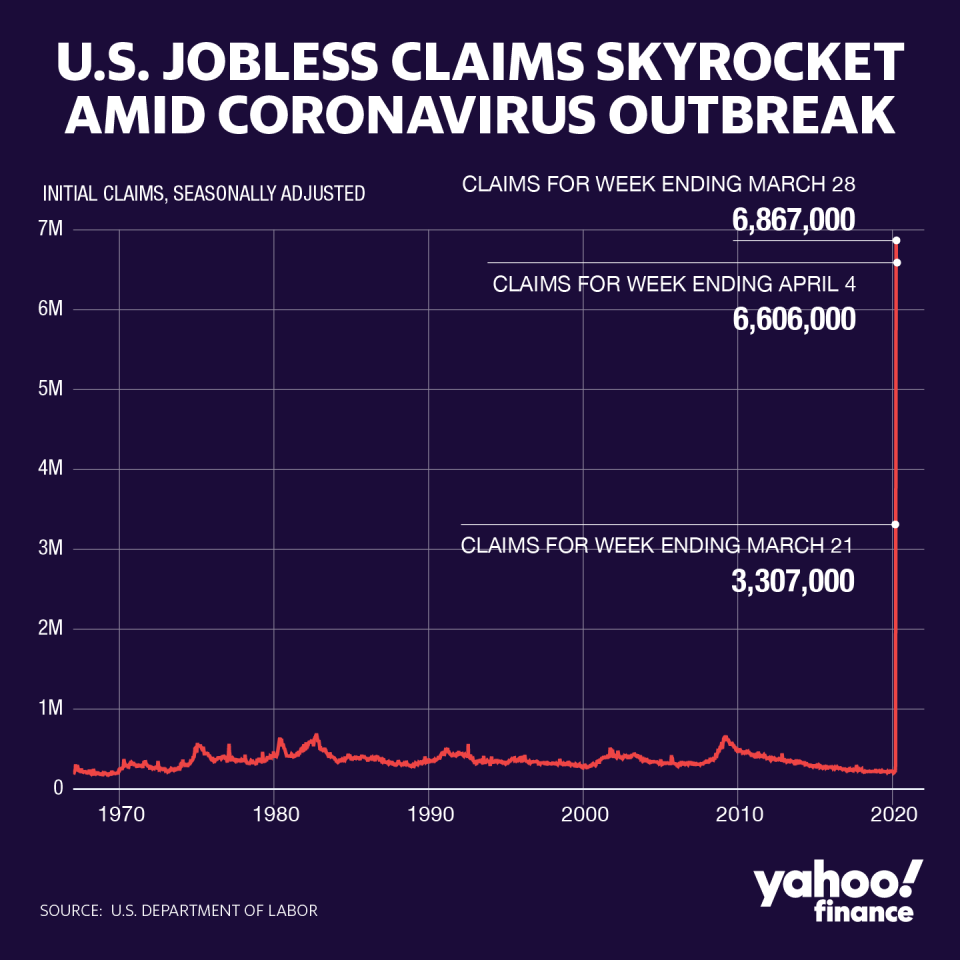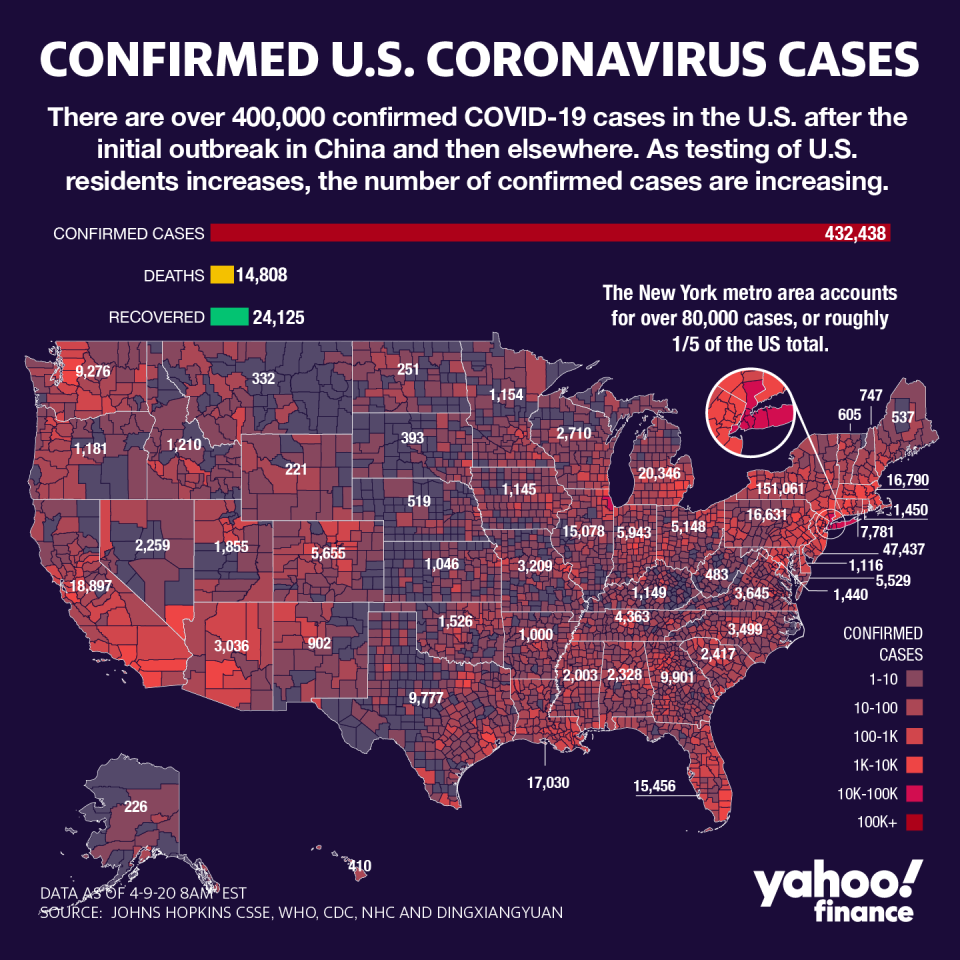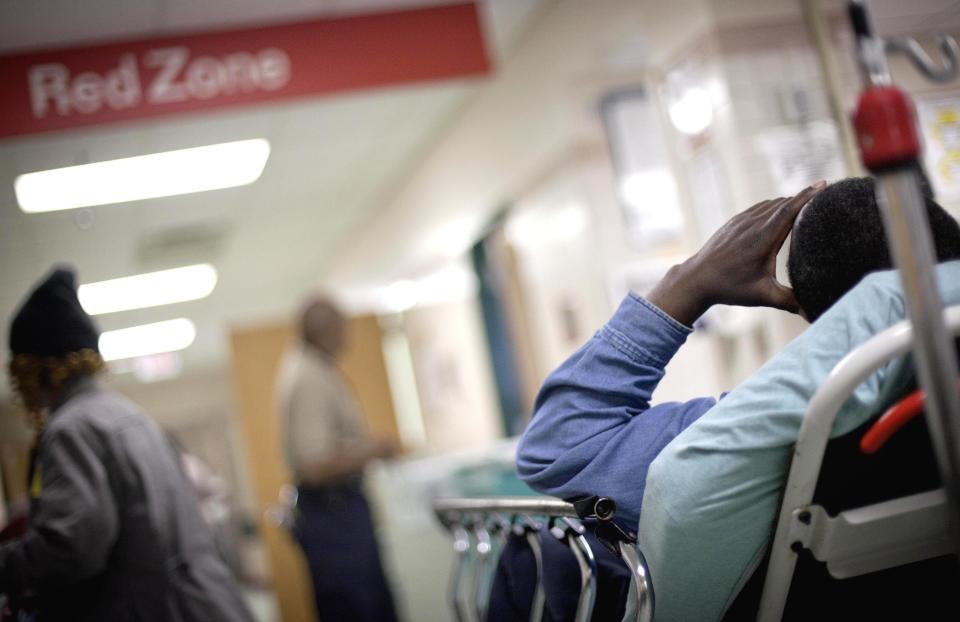Coronavirus and the U.S. health insurance system is 'a recipe for disaster'
The economic shock from the coronavirus, or COVID-19, has been brutal on the American workforce.
A recent report from the Economic Policy Institute (EPI) estimates that 3.5 million workers likely lost their employer-provided health insurance as a result of coronavirus layoffs between March 23 and April 2. That doesn’t factor in if these workers have any dependents that were on their health care plan as well.

Taking into account the latest jobless claims numbers, 16,780,000 unemployment claims were filed in three weeks. Meanwhile, 49% of Americans receive insurance through their employer. And given the cost of treatment for COVID-19 (and the cost of health care in the U.S. more generally), that’s a problem.
“The danger is that if there isn’t a concerted effort to address the health care costs, we could see continued growth of uninsured Americans and small and large businesses dropping out of operating health coverage,” Peter Lee, executive director of Covered California, the state’s health care marketplace, told Yahoo Finance. “That could mean in future years that we’re less ready for the next epidemic or more Americans are showing up in emergency rooms without insurance. That’s a recipe for disaster.”

Health care coverage options
If Americans lose employer health coverage because of coronavirus, there are several options available.
Read more: COBRA insurance: How to file if you lose your job
COBRA is one option, which means the individual continues the same health care coverage they had under their employer-based health insurance, though COBRA has higher premium payments since there is no longer an employer contribution. And if income is considered low enough, a person may be eligible for Medicaid.
And because a layoff is considered a qualifying event, an individual is eligible for a special enrollment period, which allows them to sign up for health care coverage through the Obamacare marketplace.
Read more: How to get ACA health insurance if you lose your job
The EPI report recommended that the federal government create a special enrollment period for the 38 states that have a federally-run health care marketplace. However, the Trump administration decided against that route, instead promising “cash payments” to hospitals that treat uninsured patients.

‘A huge unexpected expense for health insurance companies’
Josh Bivens, a research director at EPI, said that the number of people who have lost health insurance because of the coronavirus shock would “definitely” lead to increased health care costs down the line.
“I do think more generally, the coronavirus health shock is going to lead to rising health insurance premiums across the board in the next year or so,” Bivens said. “It’s been a huge unexpected expense for health insurance companies, and they’re going to try to recoup it with higher premiums down the road. I think there’s going to be a lot of upward pressure on premiums across the board.”
Read more: How to file for Medicaid if you lose your job
In a letter to lawmakers, a group of insurance associations explained that the health insurance industry couldn’t handle such an influx of new members and potentially having to cover their health care costs, especially for coronavirus.

“Insurance coverage works by spreading risk, but that model simply cannot account for a situation in which losses are catastrophic and nearly universal,” the letter stated. “Standard business interruption policies do not, and were not designed to, provide coverage against communicable diseases such as COVID-19, and as such, were not actuarially priced to do so.”
For those that are able to obtain health insurance through the ACA, it can directly affect health care costs down the line. According to an actuarial brief from Covered California, premiums for 2021 could increase from anywhere between 4% to more than 40% as a result of COVID-19.
“What we pay in premiums is basically the cost of the people who are involved in the plans, their health spending in the year, plus the fee for administration and profit,” Rae said. “When you spend more in one year, that has a bearing on premiums the next year. It makes sense — if we spend a lot of money this year, that money comes from somewhere. Insurers collect that money through higher premiums.”

The overall costs for coronavirus testing, treatment, and care is projected to cost in the national commercial market range from $34 billion to $251 billion.
“These costs are costs that will be borne by families, by small businesses, by large businesses, and by state and local governments,” Covered California’s Lee said. “That’s who will foot the bill. And in a time of economic instability, we don’t want to put another anchor to drag down or slow down an economy that is seeking to recover.”
He added: “The main thing that I’ve noticed is this is an epidemic of such scale that no insurance company can hide from it. No insurance company can avoid the costs. These are costs to Americans. We need to figure out how to address them head on, so we don’t have continued ripple effects in future years that aren’t near ripples, but could be economic tsunamis.”
Adriana is a reporter and editor for Yahoo Finance. Follow her on Twitter @adrianambells.
READ MORE:
Coronavirus: White House promises 'cash payment' to hospitals that treat uninsured patients
Coronavirus: Trump administration decides against nationwide special health care enrollment
Coronavirus hospital bills: A look at the costs for Americans
Read the latest financial and business news from Yahoo Finance
Follow Yahoo Finance on Twitter, Facebook, Instagram, Flipboard, SmartNews, LinkedIn, YouTube, and reddit.
